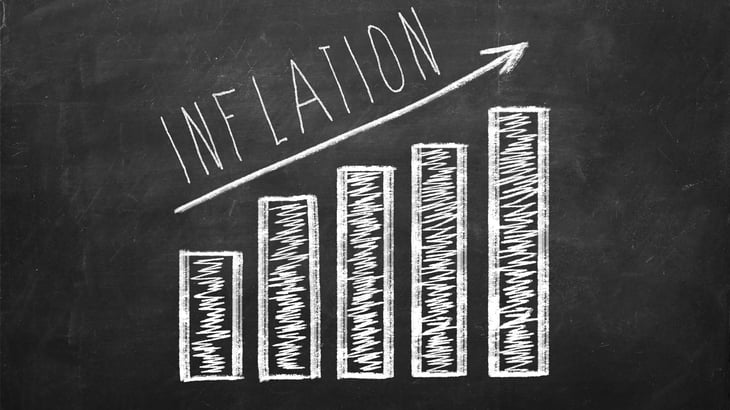
Editor's Note: This story originally appeared on NewRetirement.
As of April, inflation was at around 8.5%. That is high. On average, the costs for goods and services are 8.5% higher than at the same point last year. However, your personal inflation rate might be higher or lower than the national average.
It is important to understand that the pain inflation inflicts will vary largely from household to household. It depends on prices in your geographic location, what you spend money on, and if you have received a recent raise or not and how big of a raise it was.
Here’s how you know what your personal inflation rate looks like.
How Are Inflation Rates Determined?

There are different ways of measuring inflation. The most commonly used inflation index for households is the Consumer Price Index (CPI) tracked by the U.S. Bureau of Labor Statistics. It measures the costs for a specific list of goods and services.
All inflation measures can be controversial. Different indexes include or exclude certain categories that impact different parts of the population in different ways.
Your Personal Inflation Rate Depends on What You Purchase

The specifics of what you spend money on will determine your personal inflation rate.
The New York Times recently published an interactive quiz to help you ballpark your personal inflation rate. They ask about seven categories of spending where prices have risen a lot: automobiles, gasoline, travel, meat, home heating oil, dining out, and education.
Depending on how you answer the questions, your personal inflation rate might be as low as 5% or as high as 15%.
However, their calculations don’t account for geographic price differences and your particular shopping habits, and that is what really matters to you and your budget.
Inflation’s Impact Depends on What You Earn

Private sector employees saw an average 4.4% increase in wages and benefits in 2021. Seems okay. This is actually a historically high increase and the fastest rise since 2001.
However, if inflation was at 8.5% as of April, it actually means that you could purchase 4.1% fewer goods and services. Your raise is more than wiped out by the increase in costs.
That isn’t the case for CEOs whose already historically high pay rose an average of 17% last year according to research from Equilar. Those execs are 8.5% ahead of inflation.
In 2021, the CEOs of Expedia, Warner Brothers, ServiceNow, Apple, JPMorgan Chase, Penn National Gaming, Broadcom, and FLEETCOR Technologies had the highest total compensation, which does include stocks and options. Peter M. Kern of Expedia Group got a whopping $296,247,749.
What Is Your Personal Inflation Rate?

To determine your personal inflation rate, you could use the interactive New York Times quiz. But, it won’t really get to all the details of your particular budget.
To determine your personal inflation rate, start by totaling your spending for April 2022, for example. Then figure out what your expenses were in April 2021. Subtract your total April 2021 expenses from your total for April 2022 to come up with the difference. Then, divide the difference by the April 2021 total. The resulting quotient is your personal inflation rate before accounting for any increase in your income.
Formula: (2022 expenses minus 2021 expenses) divided by 2021 expenses equals personal inflation rate.
So if you spent $5,500 in April 2022 and $5,000 in April of 2021, your personal inflation rate is:
- ($5,500 – $5,000) ÷ $5,000 = 10%
You can use this formula to compare:
- Total expenses.
- Specific expense categories like clothing, groceries, eating out, medical, education, media, etc.
- Your costs to the specific list of expenditures that make up the common inflation measure, U.S. Bureau of Labor Statistics’ consumer price index. Go here.
- Costs over different time periods: month over month, year to date, etc.
If you want to see how any recent bump in your income helps to mitigate your personal inflation rate, you would subtract the percent your income has increased from your personal inflation rate.
So, if your personal inflation rate is 6% and you got a 4% raise, your inflation rate is 2%:
- 6% – 4% = 2%




Add a Comment
Our Policy: We welcome relevant and respectful comments in order to foster healthy and informative discussions. All other comments may be removed. Comments with links are automatically held for moderation.